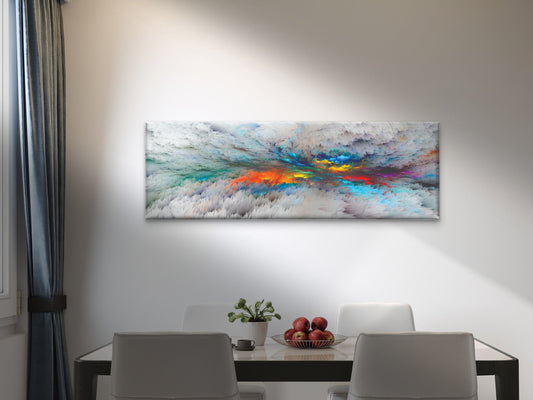For centuries, artists have been using all kinds of materials to create breathtaking works of art. But did you know that some of the paints and pigments used in the past were actually toxic? While today we can easily buy safe, ready-made paints for creating stunning canvas wall art, that wasn’t always the case. In the past, chemicals like lead, radium, and uranium were used in art, which later proved to be hazardous. Let's explore why these chemicals were used and what made them so dangerous.

Lead (White Paint)
Lead was one of the most common elements used in paint for hundreds of years. Artists loved lead-based paint because of its bright, crisp white color. It was known as “lead white” or “flake white,” and it had the perfect texture for mixing with other pigments. Plus, it dried fast, making it ideal for artists who wanted to work quickly.
However, over time, people realized that lead is extremely toxic. Exposure to lead can cause serious health problems like brain damage, especially in children. Prolonged exposure could lead to memory loss, fatigue, and even death. In the 20th century, scientists fully understood the dangers, and lead-based paints were eventually banned for health reasons.
Radium (Scheele's Green & Paris Green)
Radium was a radioactive element that glowed in the dark, and for a time, it was a prized ingredient in art and other industries. During the early 20th century, radium was used to create luminescent paints, giving artworks a beautiful glow, especially under dim lighting. It was also used in watches, clocks, and even toys.
One of the most popular colors produced with radium was Shailes Green (sometimes called Paris Green), which had a vibrant, eye-catching green hue. Unfortunately, radium turned out to be incredibly dangerous. Over time, it was discovered that radium exposure could lead to radiation sickness, cancer, and other severe health issues. Many workers who handled radium regularly suffered from these illnesses, leading to its eventual removal from the art world.

Uranium Oxide (Bright Yellow and Orange Pigments
Believe it or not, uranium – the element we now associate with nuclear energy – was once used in art. Uranium oxide was particularly popular in the 19th and early 20th centuries for producing bright yellow and orange pigments in ceramic glazes and glassware. These colors were rich, bold, and had a unique vibrancy.
However, uranium is radioactive, and long-term exposure can cause severe health problems, including cancer. Once scientists discovered the risks of uranium, its use in art materials became heavily restricted. Today, uranium-based pigments are no longer used in the art world.
Why Were These Chemicals Used in the First Place?
The main reason these dangerous chemicals were used in paints and pigments was because of their unique qualities. Artists and manufacturers at the time valued how these elements produced intense, long-lasting colors that were hard to achieve with other materials. Lead created the perfect white, radium gave art a magical glow, and uranium produced striking yellows and oranges.
Additionally, when these materials were first introduced, people didn’t fully understand how harmful they could be. Scientific knowledge of the dangers of lead, radiation, and uranium only became widespread in the 20th century, after many people had already been exposed.
The Shift to Safer Materials
Thankfully, modern art supplies have come a long way since the days of using toxic chemicals like lead, radium, and uranium. Today, artists have access to safer, non-toxic alternatives that can still produce stunning colors and effects on canvas. As we continue to create beautiful art, we can be grateful that the materials we use are not only vibrant and durable but also safe for both the artist and the viewer.
At our store, we pride ourselves on offering canvas wall art that is created with safe, eco-friendly materials, ensuring that you can enjoy beautiful artwork without any of the risks associated with the dangerous chemicals of the past. Whether you're looking for modern abstract pieces or timeless classic designs, you can shop with peace of mind knowing that our products are made with care and safety in mind.









